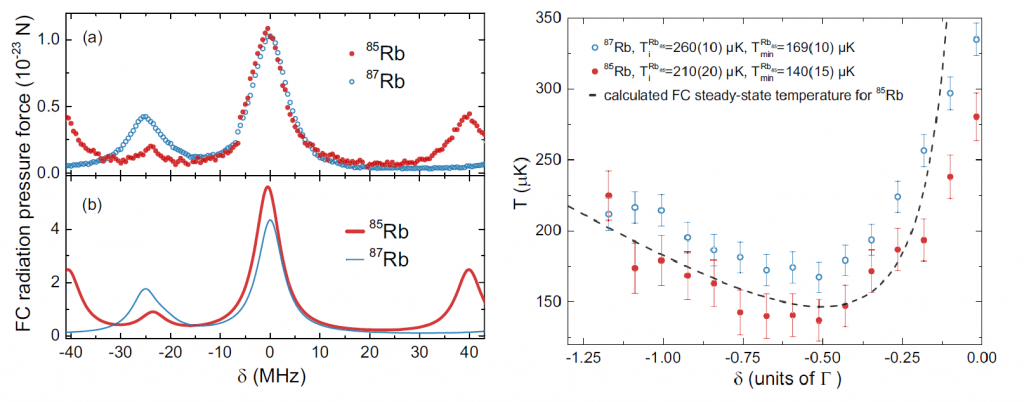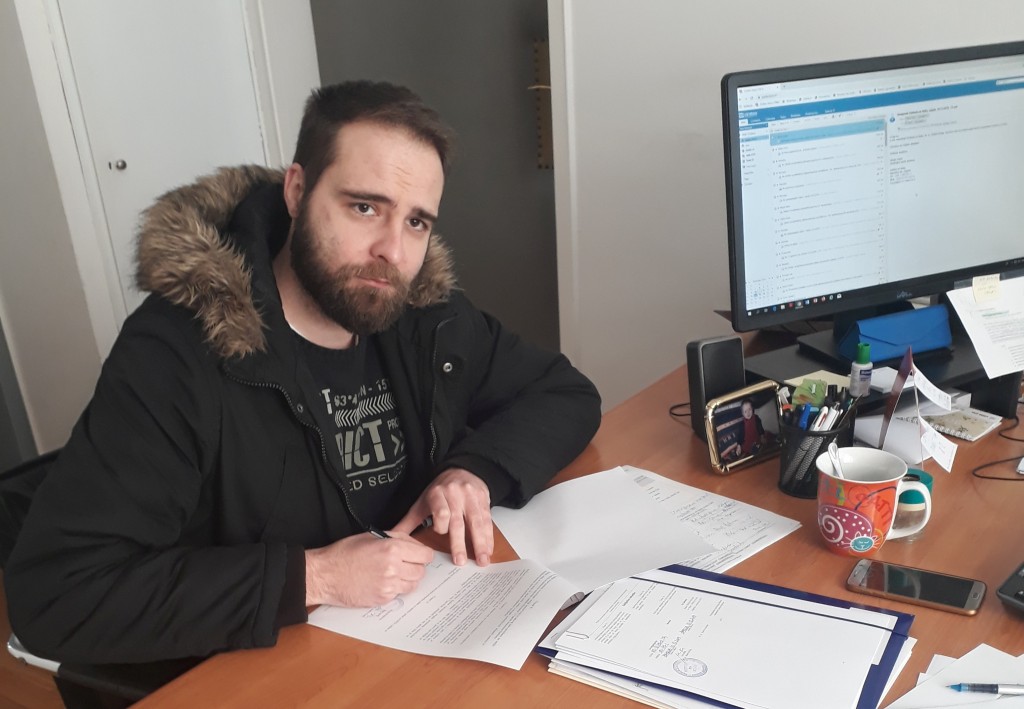

Frequency comb cooling of atoms
IP-2018-01-9047 Hlađenje atoma frekventnim češljem
Frequency comb cooling of atoms (CoolComb)
Duration: November, 1st 2018 – October, 31st 2022. Budget: 1.000.000,00 HRK
Project team:
Damir Aumiler (PI), Ticijana Ban, Neven Šantić, Danijel Buhin, Vjekoslav Vulić – Institute of physics, Zagreb, Croatia
Bojan Resan – University of Applied Sciences and Arts Northwestern Switzerland, Windisch, Switzerland
Wesley C. Campbell – University of California Los Angeles, Los Angeles, USA
The aim of this project is to create the tools that will allow us to extend laser cooling to more diverse species of atoms and molecules. Specifically, we will use an optical frequency comb for direct laser cooling and trapping of rubidium (Rb) atoms, and demonstrate simultaneous comb cooling of two Rb isotopes. To achieve this goal, we have gathered an experienced team of researchers – experts in laser physics, cold atoms, frequency comb spectroscopy, and theoretical modeling of laser-atom interactions – who will theoretically model the comb-induced radiative force on atoms and define optimal comb parameters for cooling, design and build a novel blue-diode-pumped Ti:sapphire picosecond modelocked laser, stabilize and gain control over its frequency comb spectrum, and apply the comb for direct cooling and trapping of Rb atoms and simultaneous dual-species cooling.
June 2023.
Ticijana Ban and Vjekoslav Vulić participated in the EGAS54 conference and presented posters with new experimental results from our group. Vjekoslav Vulić presented our (soon to be published) results from the experiment on light propagation through optically induced gratings in rubidium vapors.
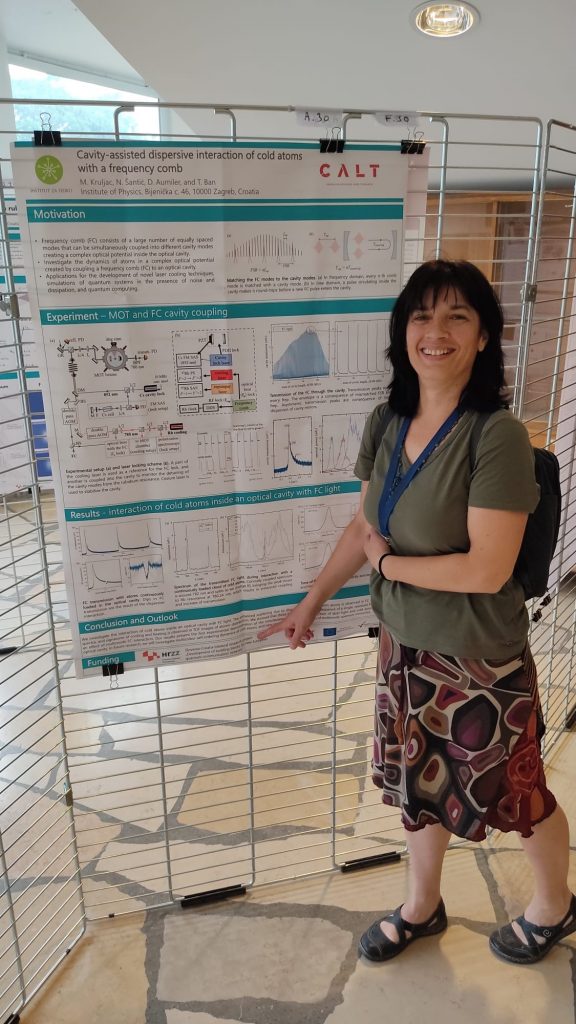
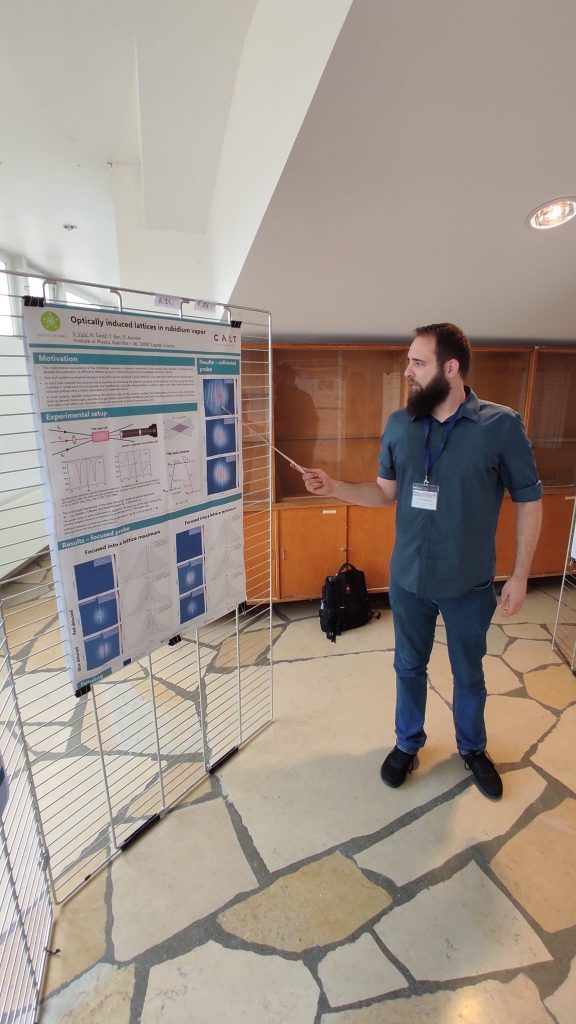
September 2022.
We have observed the optically induced gratings (lattices) for the first time! By copropagating the probe beam with two pump beams interfering in the center of a vapor cell filled with rubidium, we managed to observe the discrete diffraction of the probe beam. There is still a lot of work ahead to get publishable results, but this is an important milestone.
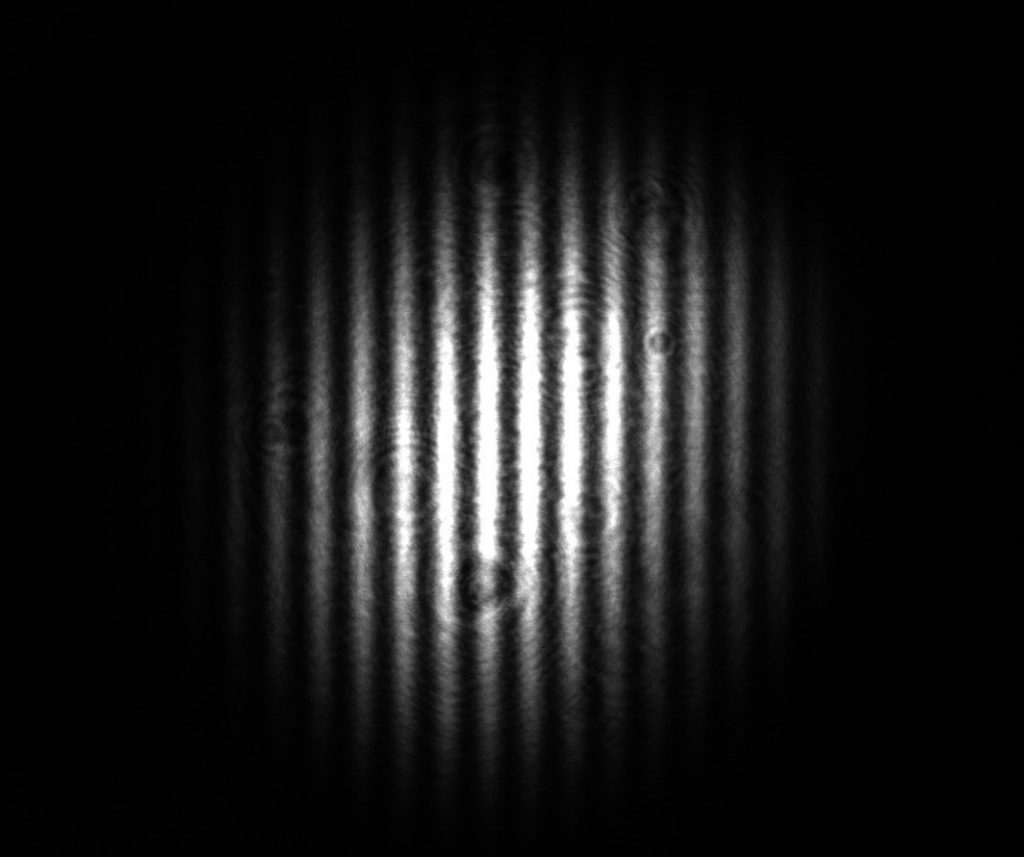
April 2022.
Our paper is published in the Journal of the Optical Society of America B: Mateo Kruljac, Danijel Buhin, Domagoj Kovačić, Vjekoslav Vulić, Damir Aumiler, and Ticijana Ban, “Frequency-comb-induced radiation pressure force in dense atomic clouds,” J. Opt. Soc. Am. B 39, 1411-1418 (2022)

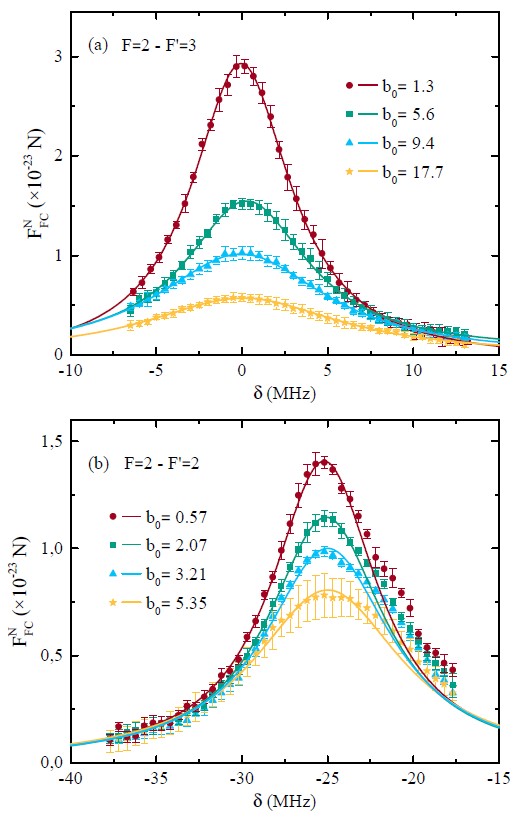
We investigate the frequency comb induced radiation pressure force acting on a cloud of cold 87Rb atoms. Reduction and spectral broadening of the frequency comb force are observed as the cloud’s optical thickness is increased. Since the radiation pressure force is uniquely determined by light scattered by an atomic cloud, we discuss different scattering mechanisms, and point to the shadow effect as the dominant mechanism affecting FC-induced force in resonantly excited dense atomic clouds. Our results improve the understanding of the interaction of frequency comb light with many-atom ensembles, which is essential for novel frequency comb applications in simultaneous multi-species cooling, multi-mode quantum memories, and multi-mode atom-light interfaces.
May 2022.
The picosecond mode-locked Ti:sapphire laser prototype is mode-locked and stabilization of the repetition frequency is in progress. The electronics for stabilization are shown in the picture on the right.
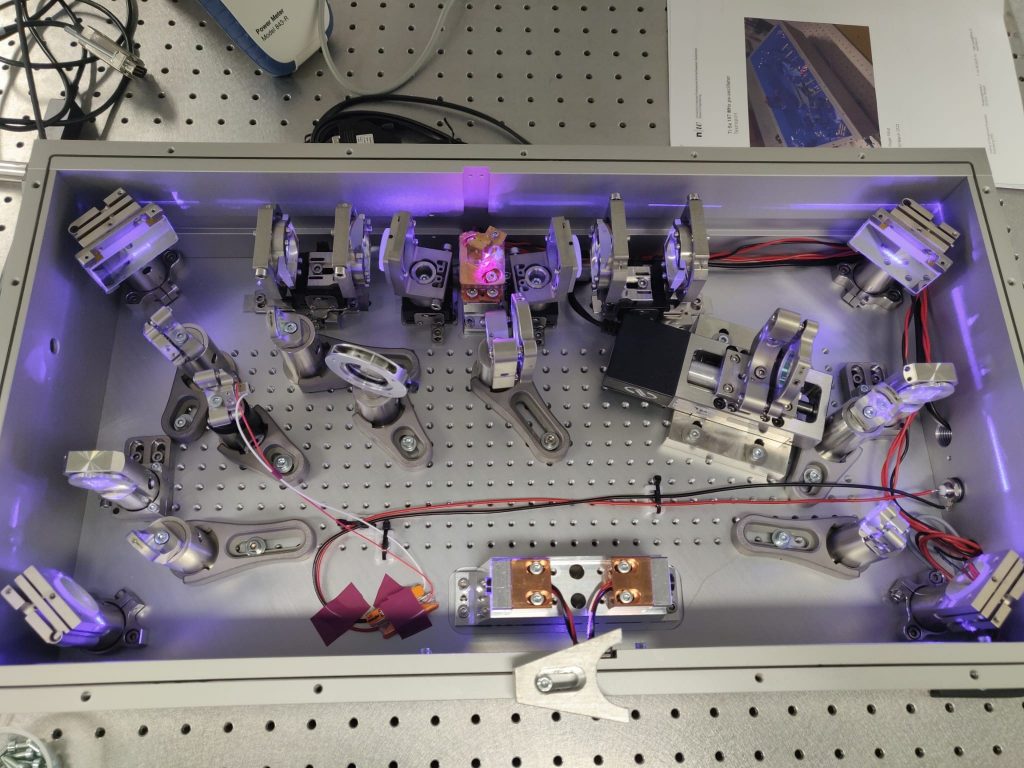
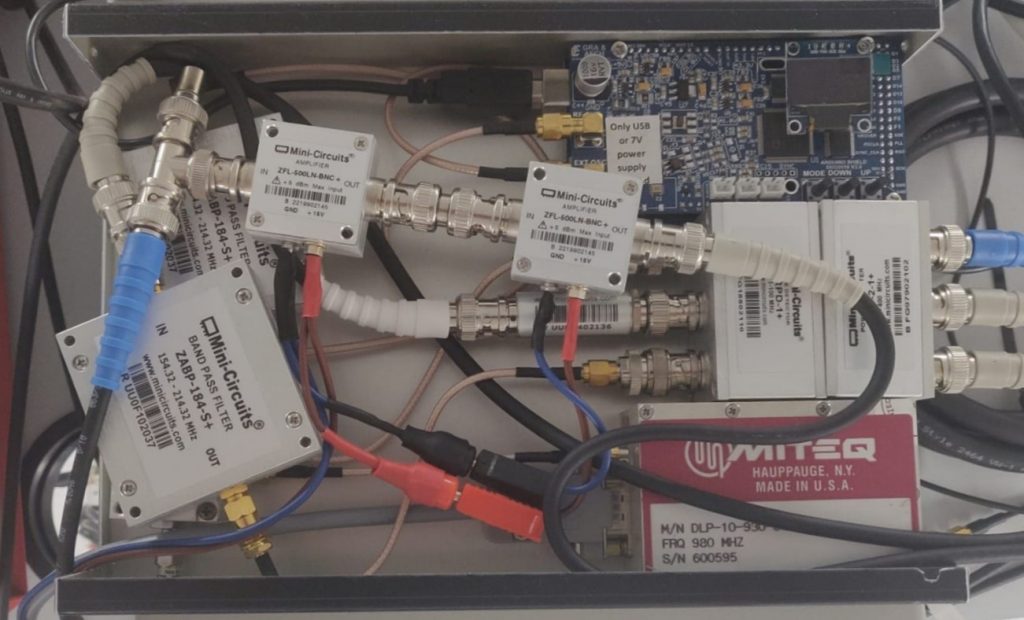
March 2022.
We have begun work on a new experiment – investigation of light propagation through optically induced gratings in rubidium vapors. It will be the first experiment to use the new CW Sirah Matisse Ti:sapphire laser. The experimental setup is getting assembled but there is still much to do.

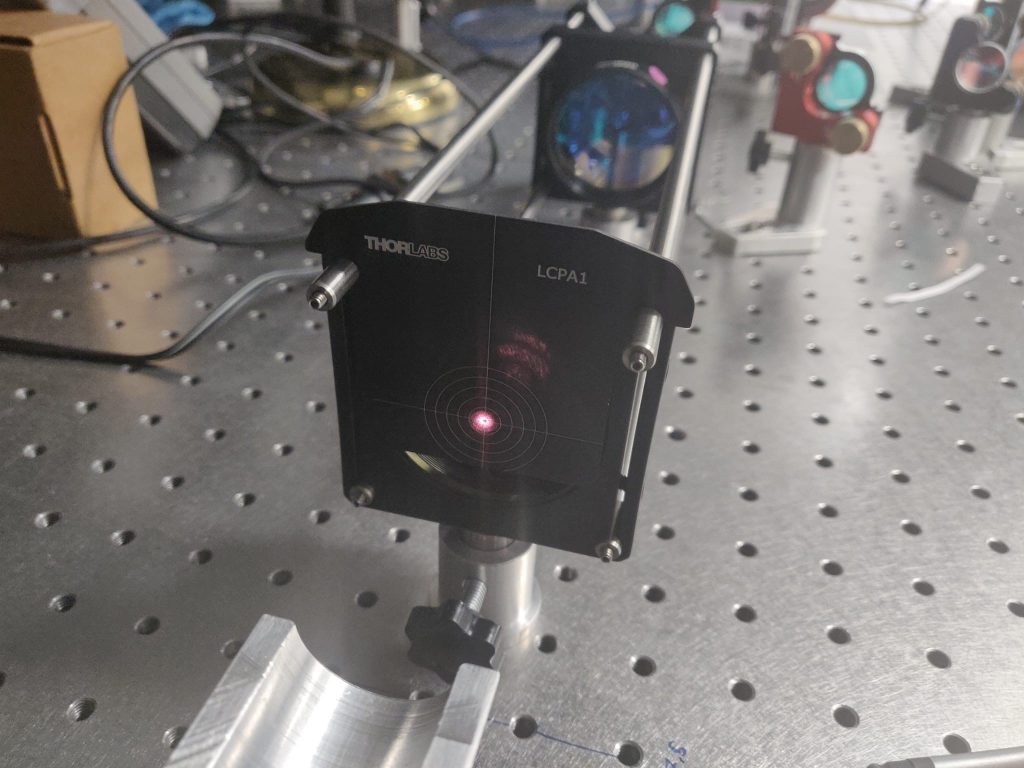
February 2022.
The cold atoms lab is moving to the new CALT building! The optical setup has been disassembled and packed, the vacuum chamber has already been moved (and the vacuum survived the trip), along with all the other equipment. After the optical tables are in place, we can begin reassembling the experiment.

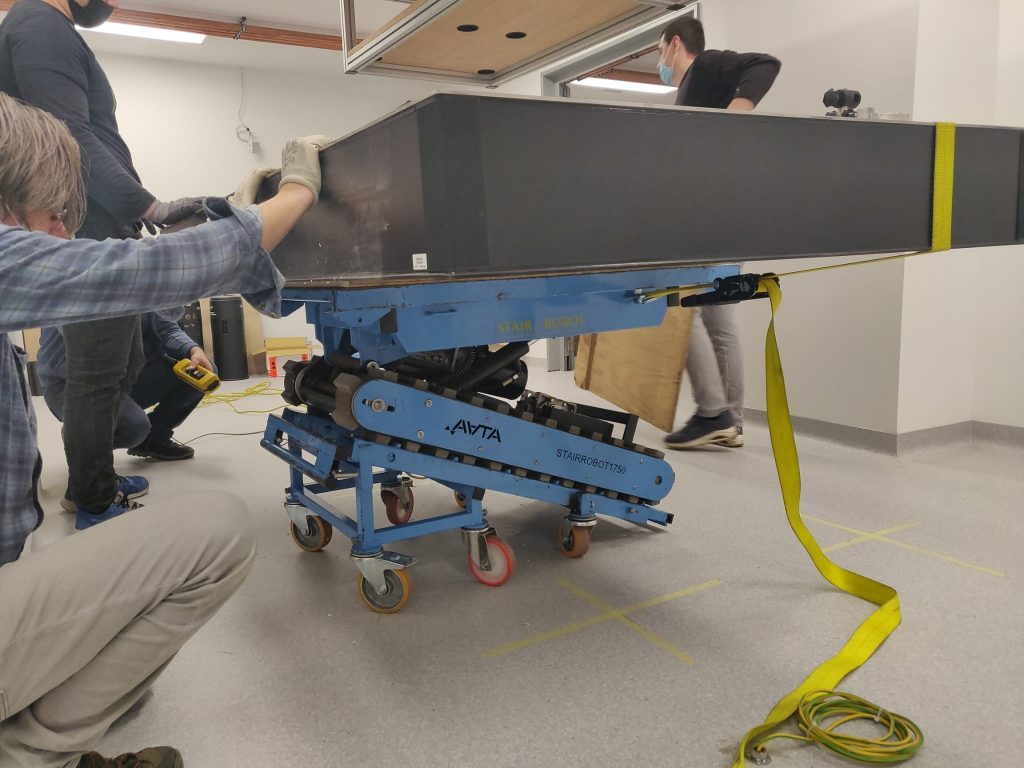
October 2020.
Our PhD student Vjekoslav Vulić visited the group of prof. Bojan Resan at the University of Applied Sciences and Arts Northwestern Switzerland for 3 months. There he participated in the construction of the picosecond mode-locked Ti:sapphire laser prototype on the breadboard. He received training on setting up and aligning the pump beams, the Ti:sapphire crystal, the laser cavity, as well as optimizing and measuring critical laser parameters. He also constructed a voltage summing amplifier to allow for stabilisation of the laser spectrum by modulating the pump diode current.
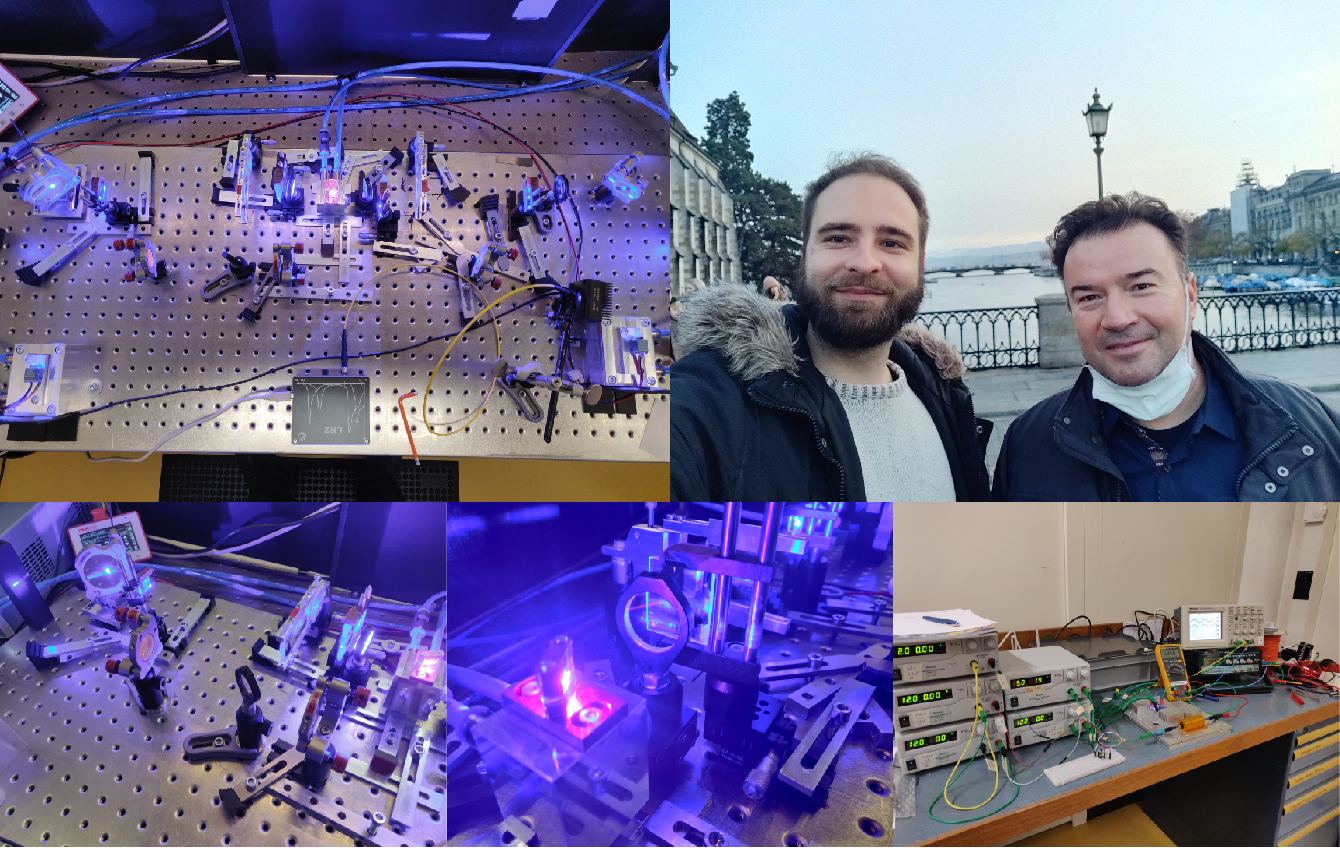
August 2020.
Our paper Simultaneous dual-species laser cooling using an optical frequency comb is published in Physical Review A.
Danijel Buhin, Domagoj Kovačić, Fabian Schmid, Mateo Kruljac, Vjekoslav Vulić, Ticijana Ban and Damir Aumiler, Phys. Rev. A 102, 021101(R) 2020.
We demonstrate 1D simultaneous laser cooling of 87Rb and 85Rb atoms using an optical frequency comb. By adjusting the pulse repetition frequency and the offset frequency, the frequency comb spectrum is tuned to ensure that two distinct frequency comb modes are simultaneously red-detuned from the cooling transitions, one mode for each species. Starting from a precooled cloud of 85,87Rb atoms at above-Doppler temperatures, we show simultaneous cooling of both species down to the Doppler temperature using two counter-propagating σ+ and σ− polarized beams from the frequency comb. The results indicate that simultaneous dual-species frequency comb cooling does not affect the cooling characteristics of individual atomic species. The results of this work imply that several atomic species could be cooled simultaneously using a single frequency comb source. This comb-based multichannel laser cooling could bring significant advances in multispecies atom interferometers for space applications and in the study of multispecies interactions.
July 2020.
Ivana Puljić defended her master thesis “Simultaneous cooling of two atomic species using an optical frequency comb“. In her thesis she studied simultaneous cooling of 85Rb and 87Rb isotopes using an optical frequency comb. On a time scale of a few milliseconds, at the detuning of -Γ/2 temperatures close to the Doppler limit are obtained.
December 2019.
Vjekoslav Vulić joined our group as s PhD student within the Frequency comb cooling of atoms project. He signed a 4 year contract on 16. 12. 2019. and will be supervised by dr. sc. D. Aumiler.
October 2019.
We offer fully funded PhD position as a four years contract. More detailed info in paragraph about last call bellow. Web page of a call: http://www.ifs.hr/news/natjecaji/natjecaj-10-1/.
September 2019.
High power blue laser diodes have only recently become commercially available and appear in the literature for less than ten years as a potential pump source for Ti:sapphire mode-locked lasers. At present, pumping Ti:sapphire lasers with blue laser diodes seems highly promising, but is still limited to research laboratories and a handful of researchers who have a hands-on experience in their application.
The project provides a unique opportunity for researchers from the Institute of Physics in Zagreb for the transfer of knowledge in the field of ultrafast laser development from the group of prof. Bojan Resan. The role of prof. Resan on the project is twofold – on the one hand he is a key contributor to the project in charge of the development of a picosecond Ti:sapphire laser pumped by blue diodes, and on the other hand he is in charge of transferring knowledge in the construction of ultrafast lasers.
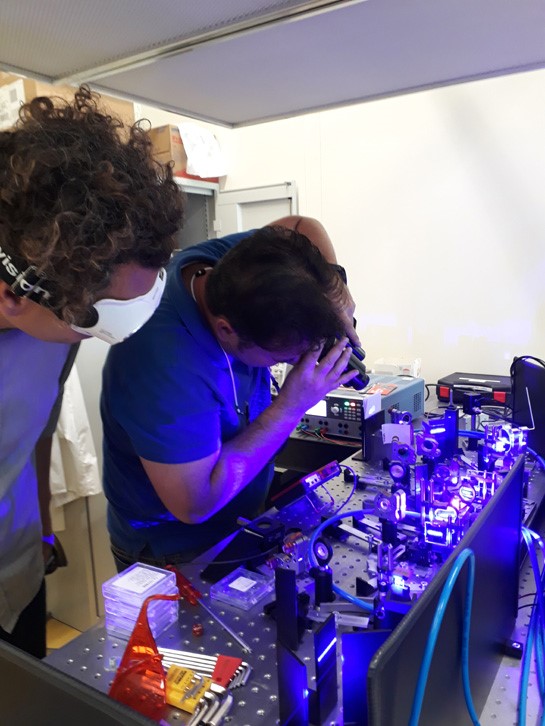 Training of dr. Damir Aumiler in building mode-locked Ti:sapphire lasers in the laboratory of prof. Bojan Resan at the University of Applied Sciences and Arts Northwestern Switzerland.
Training of dr. Damir Aumiler in building mode-locked Ti:sapphire lasers in the laboratory of prof. Bojan Resan at the University of Applied Sciences and Arts Northwestern Switzerland.
Training of dr. D. Aumiler and dr. T. Ban in building directly diode pumped mode-locked Ti:sapphire lasers included: an overview of the basics of mechanical and optical laser design, acquiring knowledge on technical characteristics of high-power blue laser diodes and the characteristics of their laser radiation (with emphasis on the beam quality), training in laser pump and laser cavity design using (freely available) computer software packages, and hands-on experience in aligning the laser optical setup and optimizing the laser operation.
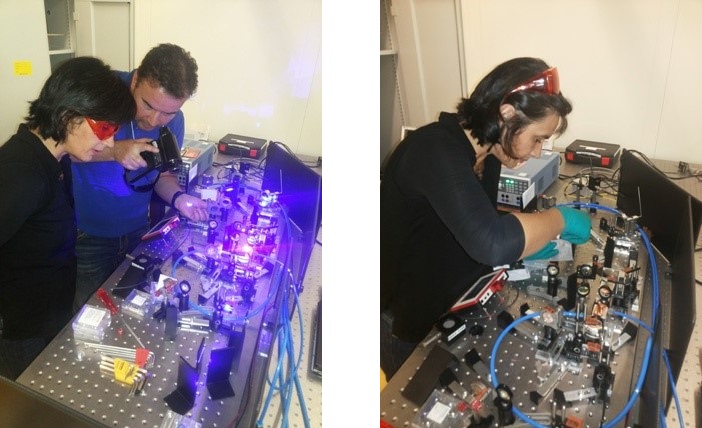
Training of dr. Ticijana Ban in building Ti:sapphire mode-locked lasers in the laboratory of prof. Bojan Resan at the University of Applied Sciences and Arts Northwestern Switzerland. The training included hands-on experience in aligning the laser cavity and optimizing the laser operation. Right panel: replacing the output coupling mirror during the testing of the laser optical design.
July 2019.
The experiment is assembled in a new lab space. The first MOT is observed and cold rubidium cloud is characterized. Thanks to Danijel, Domagoj and Mateo for their hard work.

May 2019.
Due to the implementation of the CALT project we moved the cold lab to a new lab space located in another wing of the institute. It was pretty easy to disassemble everything.
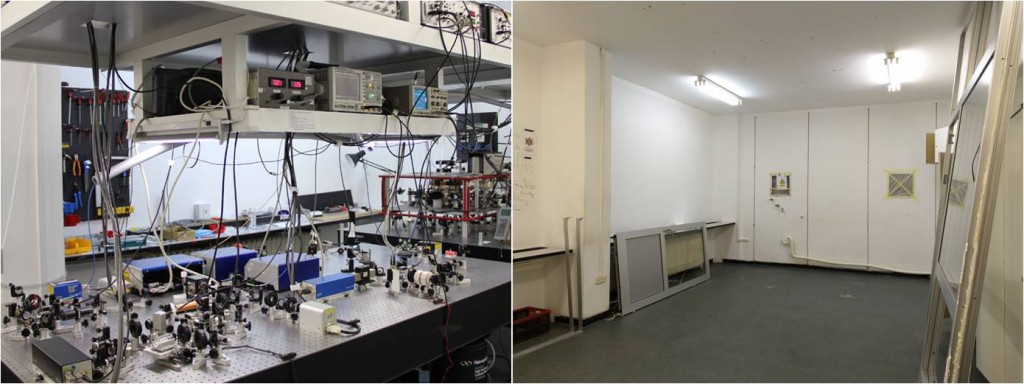
March 2019.
D. Buhin participated in Collective effects, structured light and quantum matter winterschool in Herrsching, Germany. There he learned about controlling light and matter with cooperative radiation, quantum nonlinear optics, quantum optomechanics, structured light manipulation and about building quantum systems.
December 2018. We offer fully funded PhD position as a four years contract starting in March 2019, working on the project Frequency comb cooling of atoms, led by dr. Damir Aumiler. – Call for this PhD position has been canceled.
Appr. Salary: 820 eur/month
Description
The introduction of laser cooling to atomic and molecular physics three decades ago started a revolution that continues to redefine the landscape of feasible experiments which help us better understand the quantum world. The use of narrow-band continuous-wave lasers to control the motional temperature of atoms has evolved over the years to have much broader applications than originally anticipated, rapidly pushing forward the frontiers of scientific development through impressive efforts in the field of ultracold atoms. Yet despite these substantial advances, there remain important gaps in the field, one of the most conspicuous being our inability to laser cool and trap hydrogen, (almost any) molecules, or the most prevalent atoms in organic chemistry: carbon, oxygen, and nitrogen.
The aim of this project is to create the tools that will allow us to extend laser cooling to more diverse species of atoms and molecules. Specifically, we will use an optical frequency comb for direct laser cooling and trapping of rubidium (Rb) atoms, and demonstrate simultaneous comb cooling of two Rb isotopes. To achieve this goal, we have gathered an experienced team of researchers – experts in laser physics, cold atoms, frequency comb spectroscopy, and theoretical modeling of laser-atom interactions – who will (i) theoretically model the comb-induced radiative force on atoms and define optimal comb parameters for cooling, (ii) design and build a novel blue-diode-pumped Ti:sapphire picosecond mode-locked laser, (iii) stabilize and gain control over its frequency comb spectrum, and (iv) apply the comb for direct cooling and trapping of Rb atoms and simultaneous dual-species cooling. Our successful demonstration will validate the frequency comb as a new tool for laser cooling a broader range of molecules and so far un-coolable species thus allowing breakthroughs in fields as diverse as controlled chemistry, astrophysics, precision measurements, and quantum information and simulation.
PhD student will join the group to engage in theoretical modeling of comb-atom interaction and laser cooling using a frequency comb. He/she will work closely with the experimentalists in the group, as for the complex cold atom experiment it is essential that the theoretician has an in-depth understanding of the experiment, measurement procedures and protocols, and data processing and analysis, in order to provide continuous theoretical support in modeling and interpretation of experimental results.
Master’s degree in Physics or equivalent.
Experience in atomic physics and/or cold atoms will be an advantage. Priority will be given to candidates who have received awards, scholarships, etc. for excellence in studies, participated in scientific research work, have co-authored scientific papers, or presented at scientific meetings. The applicant should be highly motivated and have the ability to do research independently as well as a part of the research group. The candidate must be fluent in both oral and written English.
1. Motivation letter
2. Curriculum vitae
3. Certificate of degree in physics
4. Contact information of at least one reference person

